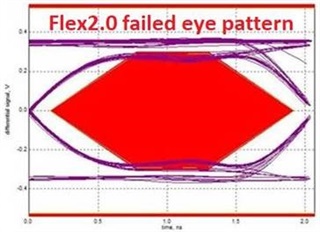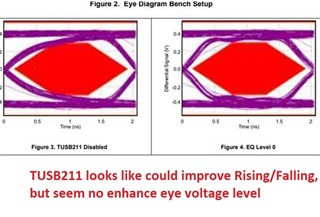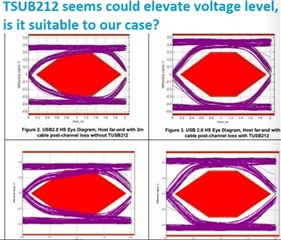Hi Ti,
Our project Flex2.0 USB2.0 eye pattern test fail as below diagram, we want to add TUSB211 at USB DP/DM paths as re-driver to strengthen its eye but don't know if TUSB211 is suitable to our case.
Our project Flex2.0 USB2.0 test failed

TUSB211 seems could not improve eye's voltage.


Question need Ti help to reply
- Could TUSB211 be able to solve our eye pattern fail like voltage too low issue? TUSB211 is simpler and we should have it in stock for experiment so we mainly want to know TUSB211 could use for our case?
- After TUSB211, other TUSB21x (TUSB212, 213, 214, 215, 216) seem they have I2C IF, could we use TUSB211 design(means we don’t use I2C) for all TUSB21x design? I meant could use one design for all TUSB21x, they’re substitute for each other?
- TUSB216I that some Ti's guy ever suggested, what’re the points Ti think it’s suitable? For material preparation, more confident to solve eye fail below? I’m not sure if TSUB216I more much expensive than older parts.
Thanks,
Novel

